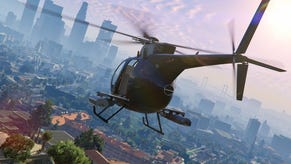Grand Theft Auto 5: deconstructing the remaster
Digital Foundry's forensic breakdown reveals radical improvements from one console generation to the next.
Promising improved visuals, new gameplay options and faster, smoother performance, Grand Theft Auto 5 returns as a next-generation remaster in a move rather atypical of Rockstar Games. Not unlike The Last of Us Remastered, much of the excitement stems from the possibilities more powerful hardware affords by addressing some of the original release's technical shortcomings. The E3 reveal trailer was certainly impressive but, without any real gameplay footage, we were left waiting until release to see if these improvements were indicative of the final product's quality. For those returning to the game, are the enhancements significant enough to warrant another trip to Los Santos - and does the final product offer more than a resolution and performance boost?
The basics are certainly in place, with an expected jump from 720p to 1080p alongside improved anti-aliasing that delivers a much sharper looking game. Performance too is much improved with the highly unstable update of the original release replaced with a smoother, though not quite perfect 30fps update. Performance has always been an issue with Grand Theft Auto on consoles, but this latest release delivers the best console experience in the series' history.
However, on first loading the new game it's perhaps not immediately apparent where the bulk of the remastering work has taken place. The look and feel of the initial heist very much feels like a current-gen conversion, with the addition of a smattering of effects boosts producing a result little better than most of the remasters we've seen this year. Moving into the initial stages of the game again produces a feeling of déjà vu. Now, simply improving the frame-rate and resolution might have been enough (generally speaking, it works for The Last of Us, after all) but GTA 5 on Xbox One and PlayStation 4 is different, with those first impressions changing radically as you dig deeper into the game. The more you play, the more you notice the phenomenal level of additional work added to the core assets - the closer you look, the more the embellishments become clear.
Grand Theft Auto 5 deserves this deconstruction we've put together here. The Rockstar North team has really paid attention to the details in a way that you wouldn't normally expect from a remaster, to the point where you may not even notice some of the more microscopic improvements that have been made. It's not so much a remaster (to use that term in context of previous re-releases) - it's more of a top to bottom revamp.
A whole new world
It starts with the basic building blocks - Rockstar has put a lot of effort into reconstructing Los Santos and that comes with a slew of new and improved assets. While base models are in many cases last-gen in nature, the amount of extra detail added on and around them results in a drastic improvement. As a sandbox, much of the experience hinges on the believability of the world and by increasing the level of detail, that world becomes more engaging to explore. The density of its denizens, the distance in which objects are drawn, and the attention to detail all serve to create a more immersive world that actively improves upon the gameplay experience. Simply put, it's a heck of a lot more fun to explore the world in this new version and the new assets almost make it feel like a new experience altogether. So what does that entail exactly?
Model improvements: While many of the game's buildings retain the same basic model as the original release, we noted many improved objects throughout the world. From newly modelled vehicle exteriors and interiors to completely redesigned trees, cacti, stumps, and other such incidental objects, the world now feels more richly detailed than it did before. In addition, level of detail distance has been expanded allowing higher quality models to appear at a greater distance from the player. The end result is that GTA 5 been improved and polished on both a micro and macro level, standing up to careful examination in a way where many remasters falls short.
Model variety: It was pretty common in previous GTA titles to encounter duplicate vehicles and pedestrians throughout the world and we're pleased to see that this has been greatly improved. While testing the PS3 version searching for improvements, we regularly stumbled across groups of identical automobiles lumped together at traffic lights while bumping into many of the same pedestrians. In comparison, those same situations on PS4 present a much wider variety of cars and people that feels more realistic. This has been a longstanding problem with the GTA series as a result of memory constraints and while it's not perfect, there is a marked improvement found throughout the remaster.
Flora and fauna: We've been down this path already but, even in the case of reduced foliage on Xbox One, the amount and quality of the plant life used throughout the world is greatly increased. It's obvious right from the start but it isn't until you reach the mountains and forests that the difference becomes so stark. Areas that were completely flat and empty receive a healthy dose of vegetation that helps bring the world to life. It's really amazing just how empty some of the areas feel on last-gen when comparing the two. It's not all roses, though, as the clipping distance still isn't perfect and pop-in is still evident, but the quality of the revamp here speaks for itself - this would simply not be possible on last-gen hardware.
Freshly cut grass: It's already clear that the wilderness in Los Santos has benefited greatly from the massive increase in foliage density but Rockstar hasn't forgotten the more finely trimmed landscapes of the city. Once flat tracts of low resolution grass textures are replaced with a nice shader that gives these patches of grass real depth and body. It's a lovely effect and one used throughout the city. It's an effect we've seen before but never in such a large game world and it's much appreciated. The downside? The puddles that form during a rain storm show minor artefacts when placed on these surfaces.
Wildlife: A nice addition to the world is the increase in number and variety of wildlife and sea-life throughout the game. Dive into the ocean and you'll run across many new types of fish, whales, sharks and rays, while exploring the mountains leaves you finding plenty of new animal species as well. It adds an additional layer of realism to the game, particularly as you start to explore the wilderness. While searching for differences between versions we were interrupted far more often by animals in this new release - which is almost terrifying now that they can hide in the grass.
Texture quality: Rockstar claims to have replaced every texture in the game for this new release and we're inclined to believe it. Everything from road and building textures right down to the smallest details tucked in the filthiest corner of Lester's house receive much higher quality artwork. It's pretty clear that the first person mode wouldn't have fared well without this upgrade - many of the game's original textures leave a lot to be desired - but the artwork stands up to close-range first-person scrutiny now in most cases. Of course, last-gen consoles had only a meagre 512MB of RAM available, so it's not surprising that Rockstar took advantage of the extra memory, but the sheer amount of work put into these new assets can't be overlooked.
Parallax occlusion maps: Beyond the resolution of the textures themselves, the game makes surprisingly good use of POM. Snow, sand, coarse building materials, hedges, road imperfections, roof tiles, and even the carpet in Michael's bedroom all receive the full POM treatment giving a real sense of detail to what were once completely flat surfaces. Notice a trend here? While POM was certainly possible on last-gen machines, the idea of using it to this degree in an open world game is exciting - and we hope to see other titles make use of it.
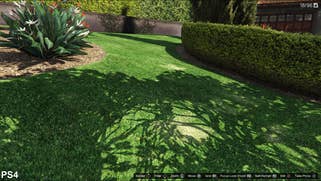


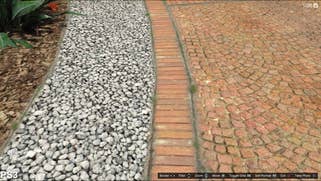

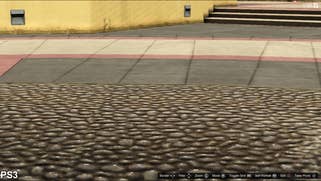
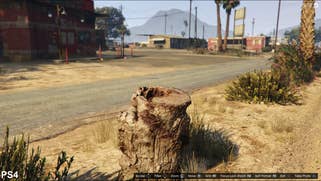
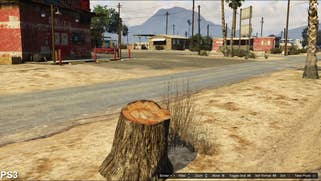

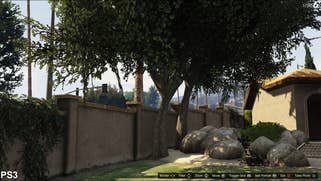
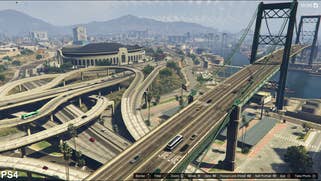
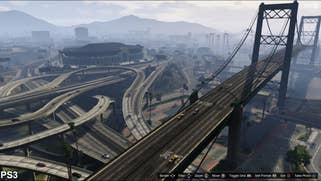


What's missing: The biggest gripe here is the very conservative improvement in traffic and pedestrian density - Rockstar hasn't bumped things up as much as we would have hoped based on the promise of the E3 trailer. The extended distance in which cars are displayed does improve the experience but the basic patterns still feel very much the same as the original game. In addition, for all the improved textures throughout the world, it's disappointing that texture filtering hasn't been improved to the same degree. It's certainly better than the original release but we're still looking at lost detail here.
Furthermore, the way LOD transitions are handled produces some fuzzy looking artefacts as details are faded in. Also, while one of the biggest features in the new release is the inclusion of a first person perspective, this new viewpoint now replaces the first person hood camera while driving. As nice as the new interiors are the view can feel somewhat constricted and we're disappointed that the bumper cam wasn't retained as an option. Ultimately, the biggest limitation here remains the fact that this is a last-gen game at its core. For all the changes Rockstar has made, we're still looking at a lot of the same base geometry and there's only so much that can be done with upgraded lighting and effects. Rockstar's next generation GTA requires a new approach to asset creation to better take into account materials and light interactions.
Light and shadow
One of the most important elements in next-generation rendering is lighting. For a last-gen title GTA 5 already looked great in this area but a number of enhancements have been made to the game's lighting model that help to create a richer world. Of course, we're still talking about an upgraded last-gen game here so more modern approaches were out of the question. What Rockstar has done, however, is still a vast improvement over the original release.
Volumetric lighting: One of the more demanding effects in the game has to be the inclusion of high quality light volumes. The game takes atmosphere and light sources into account, resulting in realistic simulation of light scattering. The game still makes use of screen-space sun shafts for the sun itself but when no direct light source is visible on-screen, the light rays are no longer rendered. By using a volumetric solution light shafts are visible even in the absence of an on-screen light source. It's a more flexible, dynamic solution that adds a lot of atmosphere to the world.
Adaptive depth of field: Anyone who's messed around with the ENB mod should be familiar with this effect - basically, when the camera focuses on near field objects, distant objects become obscured in a lovely depth of field effect. The effect adjusts dynamically based on where the camera is pointing and the focal distance of centred objects. It's not so aggressive as to be triggered during regular play outside of objects far off in the distance, and even better, for those that dislike it, the option to disable it exists within the menu. Beyond this specific effect, Rockstar also applies a very subtle DOF effect to distant objects that becomes especially dramatic at night as lights take on a nice circular bokeh effect.
Additional analysis:
Reflections and mirror resolution: Additional reflections are added throughout the world. Most notably, many interiors with shiny floors now fully reflect the surrounding environment. We also see improved water reflections particularly in the smaller pools of water. On top of that, the mirror effect - such as the one used in various clothing shops - is now rendered at a much higher resolution.
Light pollution: Light pollution is simply the alteration of natural outdoor lighting by way of man-made artificial lighting. A bright city at night clearly produces this effect as the atmosphere is transformed around these sources. Tying in with the volumetric lighting system, the light pollution in GTA 5 helps to create a more realistic night-time environment while in and around the city.
Ambient occlusion enhancements: The last generation version of GTA 5 used a low quality, inaccurate form of ambient occlusion that produced large, shaky patches of shadow in a very approximate fashion. The implementation in this updated release is of a higher quality, helping to create more natural contact shadows throughout, without visible trembling.
Light sources: Rockstar has allowed for a much larger number of visible light sources to appear on-screen and much of this is realised with a greater viewing radius. Spotlights are now visible from much further out, allowing for distant environments to appear properly lit well before the player reaches them. For example, flying over the small town to the far north in a helicopter in the new version shows a town bathed in spot lights while, on last-gen, it's almost completely dark.
Shadow resolution: Unsurprisingly shadow quality is improved as well with higher resolution shadows and improved shadow LOD visible throughout the world. Shadows on last-gen often appeared rather messy at any reasonable distance, so this is a welcome improvement.

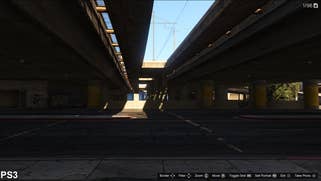
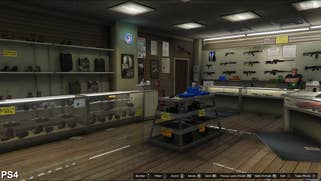
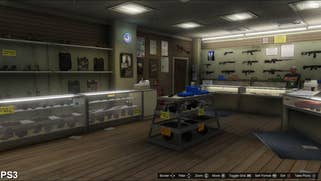
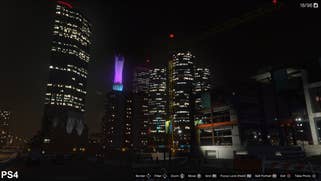

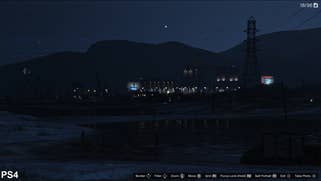

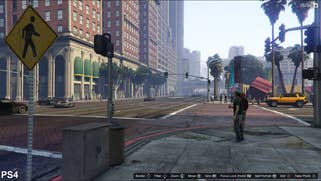


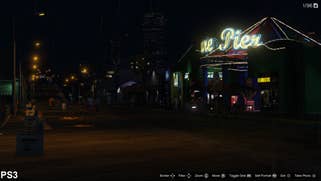
What's missing: The biggest issue we have with shadows and lighting concerns shadow LOD. While much improved over the last-gen version, the radius around the character in which the highest resolution shadows are drawn remains too small. Plenty of detail is obscured just a couple metres away from the character. Hopefully, the PC version should solve this problem. Also, as nice as the lighting is, it's very much rooted in last-gen principles. We're hoping that Rockstar tackles a physically-based pipeline for material creation with its next game. Geometry, lighting and materials upgrades are the major elements that clearly separate current-gen titles from their last-gen equivalents.
Atmospherics and effects
Rain: This new release features improved rain effects, both in terms of the actual droplets used and the way they interact with the game's lighting system. Droplets themselves now look better with a more transparent appearance that distorts the environment behind it. The raindrops now appear to receive illumination from light sources as well resulting in some dramatic scenes. On top of that we now see reflective puddles pool around the world with simulated raindrop patterns visible across the surface.
Wind effects: Power lines, trees and flags were already impacted by wind in the original release but Rockstar has added wind effects to a number of other objects. Now we see store awnings and other displayed fabrics move smoothly with simulated wind. Unfortunately there are some caveats to this as you'll see below.
Motion blur: GTA 5 still lacks a significant motion blur implementation that would improve high-speed action dramatically. However, the team has implemented a rather subtle object blur on first-person animations. As your character's arms go flailing in front of the camera, this blur is used to accentuate motion rather successfully. Quite why blur has been eliminated while driving quickly, a la GTA 4, remains a mystery as it is quite a nice effect.
The ocean: The beautiful ocean simulation returns with waves that appear to be rendered out to a greater distance. Furthermore, exploring the underwater depths is met with improved post-processing effects that enhance the effect.
Additional ambiance: On top of that we note the addition of other effects throughout the game, including more insects and particles flying through the air, along with additional smoke effects pouring out of the game's various industrial plants.

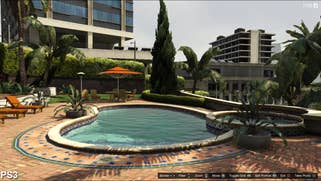
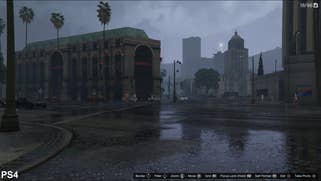

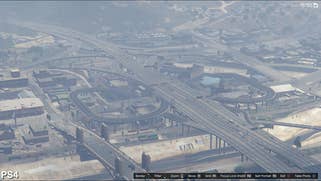

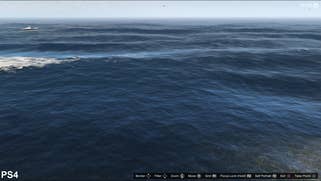
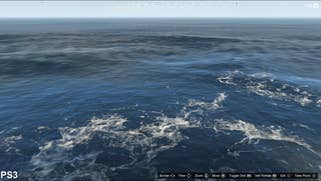
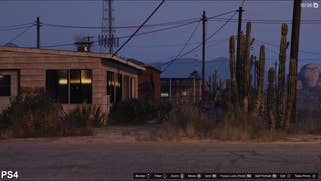
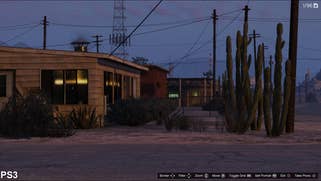
What's missing: In the last-gen version, trees sway in the breeze while in the current-gen version, they are completely static. What makes this even more bizarre is the fact that palms and leaves are now interactive in the updated release while, in the original, player models just clip right through the leaves. Both versions feature moving grass and flowers, of course, but static trees definitely detract from the atmosphere. Looking back at the Rockstar produced PS3/PS4 comparison trailer embedded above, we see trees blowing in the breeze on PS4, making the situation even more bizarre. We can only hope this is a simple bug that can be corrected in a patch, as it definitely makes the world feel less alive than it should. On a similar note we also found an issue with the ocean rendering; while waves are rendered out much further than the original PS3 game, the remaster seems to be missing a layer of foam.
Grand Theft Auto 5 remastered - the Digital Foundry verdict
Back in June this year, Rockstar presented a stunning vision for its new remaster of Grand Theft Auto 5. The final release is an impressive effort with a mammoth amount of work invested in it, but there are a few curious differences between the reveal footage and the final game.
The good news is that most of the promises are delivered: the level of detail is consistent, lighting is suitably upgraded, and lots of new post-processing effects are implemented. In fact, the trailer doesn't even really cover the full breadth of what has been added here, so in many ways Rockstar has actually exceeded expectations. There's a catch though, and that lies in the game's traffic and population density. The trailer showcases a few specific areas jam-packed with cars and pedestrians, yet we could not replicate those results in the final game - despite spending multiple days within the game world monitoring those areas. There are indeed more pedestrians and cars on-screen in many areas and the draw distance of such objects has been expanded, but don't expect to see anything quite like the initial E3 trailer in this regard. It's possible that performance issues kept the team from delivering on this vision, but it seems equally plausible that such thick traffic patterns simply weren't much fun and interrupted the flow of the gameplay.
It's for this reason that we're quite eager to get our hands on the PC version of the game. With the potential for greater customisation, it should hopefully shine some light on the settings used in the console version. GTA 4 allowed users to adjust traffic density, and we're hopeful that a similar option will make its way into the upcoming PC remaster. Will it be possible to recreate those traffic-filled streets observed in the trailer? We're looking forward to finding out. We're also curious about performance on PC. GTA 4 was an incredibly demanding game that doesn't run particularly well, even on modern hardware, yet Max Payne 3 - a game with a narrower focus - ran like a dream. However, with the consoles resembling PC hardware in many respects, and based on the quality of the latest release, we're hopeful that performance will be solid.
As always, the future of the series remains unclear, but this latest Rage (Rockstar Advanced Game Engine) engine-powered release is quite promising. Performance is much more consistent than any previous GTA release and plenty of advanced visual features, typically reserved for more linear games, are implemented. Even without a significant increase in world detail, moving to a physically-based pipeline alone could transform the game's visuals into something truly extraordinary. Grand Theft Auto as a series has typically suffered from pretty serious performance issues and, while it never limited its popularity, we'd love to see a new, mainline instalment that runs properly out of the gate.
For now though, we have the excellent, almost definitive version of Grand Theft Auto 5 to enjoy. The host of visual and performance improvements makes a huge difference and we've deeply enjoyed re-playing the game over the last couple of weeks. Looking back over the last year of last-gen remasters it's clear that Grand Theft Auto 5 stands above the pack - it's one of the only releases to lack any sort of "remastered" subtitle, yet it's one of the few that truly deserves it.








